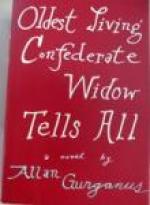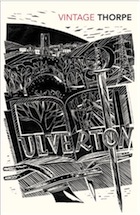Author Photo And Bio
 1. Clarissa by Samuel Richardson (1747–48). This long epistolary novel —full of sexual tension, violence, and psychic conflict —tells the tale of the virtuous Clarissa Harlowe and her rakish suitor, Robert Lovelace. Disowned by her family, confined in a brothel and raped, Clarissa pays a high price for her morality. Yet she accepts her fate with a moving acceptance in this landmark of English realistic fiction.
1. Clarissa by Samuel Richardson (1747–48). This long epistolary novel —full of sexual tension, violence, and psychic conflict —tells the tale of the virtuous Clarissa Harlowe and her rakish suitor, Robert Lovelace. Disowned by her family, confined in a brothel and raped, Clarissa pays a high price for her morality. Yet she accepts her fate with a moving acceptance in this landmark of English realistic fiction.
 2. Romeo and Juliet by William Shakespeare (1595). The story of star-crossed Veronese lovers, this early romantic tragedy painfully depicts the fatal course of young lovers ruined by circumstances beyond their control, belonging as they do to two families who hate each other for long forgotten reasons. The intense violence at the heart of the play is matched only by the intense passion of Romeo and Juliet, who pay the ultimate price for the brief, intense, and pure love they shared.
2. Romeo and Juliet by William Shakespeare (1595). The story of star-crossed Veronese lovers, this early romantic tragedy painfully depicts the fatal course of young lovers ruined by circumstances beyond their control, belonging as they do to two families who hate each other for long forgotten reasons. The intense violence at the heart of the play is matched only by the intense passion of Romeo and Juliet, who pay the ultimate price for the brief, intense, and pure love they shared.
 3. Emma by Jane Austen (1816). The story of Miss Woodhouse —busybody, know-it-all, and general relationship enthusiast —is a comedy of manners deftly laced with social criticism. The charm largely inheres in Emma’s imperfections: her slightly spoiled maneuverings, her highly fallible matchmaking, her inability to know her own heart. Emma teeters from lovable one moment to tiresome and self-centered the next. In writing her story, Austen found an ideal venue for her note-perfect, never-equaled archness.
3. Emma by Jane Austen (1816). The story of Miss Woodhouse —busybody, know-it-all, and general relationship enthusiast —is a comedy of manners deftly laced with social criticism. The charm largely inheres in Emma’s imperfections: her slightly spoiled maneuverings, her highly fallible matchmaking, her inability to know her own heart. Emma teeters from lovable one moment to tiresome and self-centered the next. In writing her story, Austen found an ideal venue for her note-perfect, never-equaled archness.
 4. Great Expectations by Charles Dickens (1860–61). Dickens gives a twist to an ancient storyline —of the child of royal birth raised in humble surroundings. Looking back on his life, Pip describes his poor youth near marshes in rural England —his chance encounter with a murderous convict, his experiences with the strange Miss Havisham, who always wears a wedding dress, and his love for her beautiful adopted daughter Estella. As he approaches adulthood, Pip learns that he has a secret benefactor who arranges opportunities for him in London, wherein lies the tale, and the twist.
4. Great Expectations by Charles Dickens (1860–61). Dickens gives a twist to an ancient storyline —of the child of royal birth raised in humble surroundings. Looking back on his life, Pip describes his poor youth near marshes in rural England —his chance encounter with a murderous convict, his experiences with the strange Miss Havisham, who always wears a wedding dress, and his love for her beautiful adopted daughter Estella. As he approaches adulthood, Pip learns that he has a secret benefactor who arranges opportunities for him in London, wherein lies the tale, and the twist.
 5. The Poisonwood Bible by Barbara Kingsolver (1998). Set in the Belgian Congo in 1959, it details Baptist preacher Nathan Price’s one-man campaign to convert African natives to Christianity in an unforgiving land. Kingsolver juxtaposes Nathan’s monomania with his wife Orleanna’s stoical solidarity with their four daughters, who react variously to their father’s missionary zeal and the culture it never manages to reach (much less transform), in this rich portrayal of American innocence and arrogance run amok.
5. The Poisonwood Bible by Barbara Kingsolver (1998). Set in the Belgian Congo in 1959, it details Baptist preacher Nathan Price’s one-man campaign to convert African natives to Christianity in an unforgiving land. Kingsolver juxtaposes Nathan’s monomania with his wife Orleanna’s stoical solidarity with their four daughters, who react variously to their father’s missionary zeal and the culture it never manages to reach (much less transform), in this rich portrayal of American innocence and arrogance run amok.
 6. Red Shift by Alan Garner (1973). An ancient stone ax head connects the three young protagonists in this bleak science fiction novel set around Cheshire, England, during three time periods —the Roman Empire, the English Civil War, and the present day. Alienated from themselves and those they love, the three men —who share a similar name —feel the pull of a mystic force that they can’t quite fathom. Their experiences echo each other in this experimental tale told almost entirely in dialogue.
6. Red Shift by Alan Garner (1973). An ancient stone ax head connects the three young protagonists in this bleak science fiction novel set around Cheshire, England, during three time periods —the Roman Empire, the English Civil War, and the present day. Alienated from themselves and those they love, the three men —who share a similar name —feel the pull of a mystic force that they can’t quite fathom. Their experiences echo each other in this experimental tale told almost entirely in dialogue.
7. Les Liaisons Dangereuses by Pierre Choderlos de Laclos (1782). A candidate for “most cynical fiction ever penned,” the story features two charming but depraved aristocrats, the Marquise de Merteuil and the Vicomte de Valmont, who try to relieve their boredom by plotting the seduction of a young virgin and a virtuous wife. Glittering like Milton’s Satan against the pallid ranks of the virtuous, they skillfully seduce the reader through the urbanely immoral philosophy they detail in letters to each other in this wicked satire of the Age of Reason.
 8. Oldest Living Confederate Widow Tells All by Allan Gurganus (1989). Smart, funny, sharp-tongued Lucy Marsden was seventeen when she married a fifty-year-old veteran of the Civil War, Captain William Marsden. Now ninety-nine, she recalls her historic life —especially her husband’s military service and the psychological trauma it inflicted, a slave’s journey from Africa, and Sherman’s march through the South —in vivid, colorful language.
8. Oldest Living Confederate Widow Tells All by Allan Gurganus (1989). Smart, funny, sharp-tongued Lucy Marsden was seventeen when she married a fifty-year-old veteran of the Civil War, Captain William Marsden. Now ninety-nine, she recalls her historic life —especially her husband’s military service and the psychological trauma it inflicted, a slave’s journey from Africa, and Sherman’s march through the South —in vivid, colorful language.
9. The Passion by Jeanette Winterson (1987). Henri is Napoleon’s cook. For eight years he has followed his diminutive idol. But now, in Russia —as the land turns deathly cold, soldiers starve, and Moscow burns —Henri becomes disenchanted by war. His life takes an exotic turn when he falls for Villanelle, a Venetian pickpocket and croupier who has literally lost her heart to another woman. In Venice, Henri’s passion turns toward madness as he learns “the difference between inventing a lover and falling in love.”
 10. Ulverton by Adam Thorpe (1992). The fictional town of Ulverton—and the English language itself—are the central characters of this debut novel in which a dozen different voices detail three hundred years in the life of an English village. As he moves from the time of Cromwell to the 1980s in twelve rich chapters, Thorpe deploys language drawn from the period described. He also displays a mastery of literary form, inventing diary entries, sermons, drunken conversations, and film scripts to tell his story.
10. Ulverton by Adam Thorpe (1992). The fictional town of Ulverton—and the English language itself—are the central characters of this debut novel in which a dozen different voices detail three hundred years in the life of an English village. As he moves from the time of Cromwell to the 1980s in twelve rich chapters, Thorpe deploys language drawn from the period described. He also displays a mastery of literary form, inventing diary entries, sermons, drunken conversations, and film scripts to tell his story.